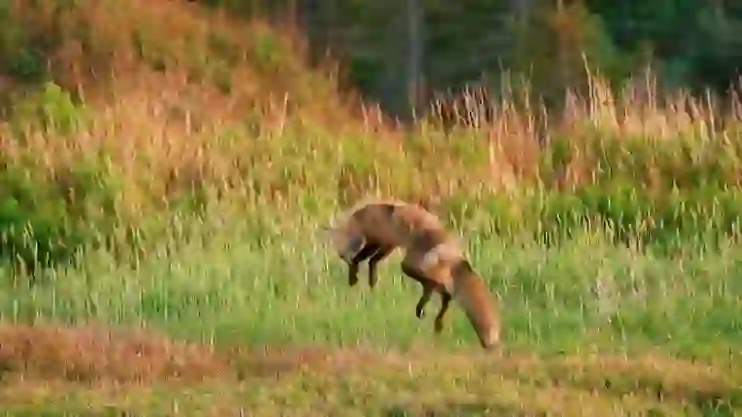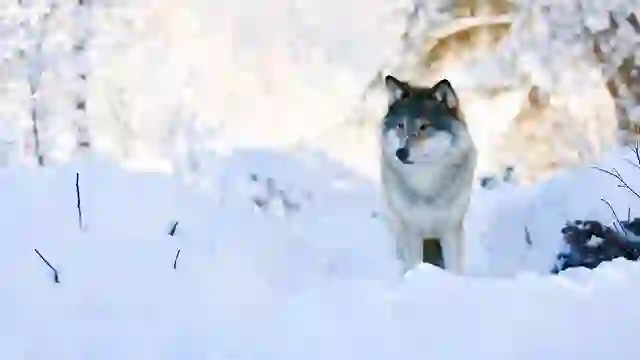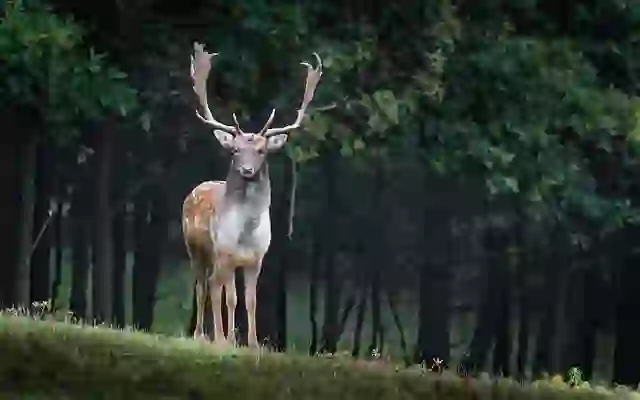
Steppe Wolf
Steppe Wolf
Steppe Wolf
Across the vast steppes of Central Asia, the steppe wolf thrives, a resilient predator adapted to the arid environment. They are nomads of the wild, roaming across vast distances, relying on their wits to survive in a land of limited resources. Let's delve into the world of the steppe wolf, exploring their ecology, their unique adaptations, and the complex relationship they share with humans.
Steppe Wolf Basic Infomation

| Property | Value |
|---|---|
| Scientific Name | Canis lupus campestris |
| Taxonomic Status | SUBSPECIES |
| Rank | SUBSPECIES |
| Vernacular Names | Steppe Wolf |
| Kingdom | Animalia |
| Phylum | Chordata |
| Class | Mammalia |
| Order | Carnivora |
| Family | Canidae |
| Genus | Canis |
| Habitats | Steppes and deserts of Central Asia |
| Conservation Status | Least Concern |

Size
They are about 3.3 to 4.3 feet (1 to 1.3 meters) long and weigh about 66 to 88 pounds (30 to 40 kilograms). They are a relatively small subspecies of Eurasian wolves. Males tend to be larger than females.

Lifespan
Their lifespan in the wild is about 7 to 10 years.

Distribution
They are found in Central Asia, including Kazakhstan, Uzbekistan, Turkmenistan, and southern Russia. They inhabit dry steppes and semi-deserts, demonstrating their ability to survive in environments with limited water.
Steppe Wolf Q&A

What kind of wolf is the steppe wolf?
The steppe wolf is a subspecies of the Eurasian wolf, found in the steppes and deserts of Central Asia.
They are smaller, have shorter fur, and a lighter coloration compared to other Eurasian wolves, adaptations that allow them to survive in this arid climate. They are also known as the 'desert wolf'. Steppe wolves live in packs and hunt cooperatively. They are known for their intelligence and complex methods of communication, using howls, body language, and facial expressions to interact with each other.

What do steppe wolves eat?
Steppe wolves are carnivores and primarily prey on herbivores such as gazelles and saiga antelope.
They hunt in packs, allowing them to take down prey much larger than themselves. They also eat rabbits, rodents, and birds. In the winter, when food is scarce, they may scavenge on carrion. Sometimes, they prey on the livestock of nomadic herders, which leads to conflicts with humans.

[Quiz!] Why are steppe wolves so fast?
Steppe wolves are swift hunters, capable of reaching speeds of over 37 miles per hour (60 kilometers per hour)!
Their long legs, agile bodies, and strong cardiovascular systems make them excellent runners. They use their speed to chase down and capture their prey.

[Quiz!] Are steppe wolves dangerous to humans?
Steppe wolves rarely attack humans.
They are generally shy and tend to avoid human contact. However, with human development encroaching on their habitat, they are sometimes forced to venture closer to human settlements in search of food. This has led to occasional conflicts between humans and steppe wolves. If you encounter a steppe wolf, it is best to avoid approaching or provoking it and to quietly leave the area.

[Quiz!] Are steppe wolves endangered?
The steppe wolf is listed as 'Least Concern' on the IUCN (International Union for Conservation of Nature) Red List.
This means they are not currently considered endangered. However, their numbers may be declining due to habitat loss, poaching, and killings to protect livestock. To protect steppe wolves, it is essential to conserve their habitat, prevent poaching, and promote coexistence with humans.

Would you like to become a part of the 'Animalbook.jp'?
Turn your knowledge into Q&A and share it with the world. ※Publication will be activated after purchase. Let's share information together!
Steppe Wolf Type of List

Characteristics of Steppe Wolves
- Subspecies of the Eurasian wolf
- Live in the steppes and deserts of Central Asia
- Smaller than other Eurasian wolves
- Short fur
- Lighter coloration
- Fast runners
- Live in packs
- Primarily prey on gazelles and saiga antelope
- Least Concern (LC) but their numbers may be declining due to habitat loss, poaching, and human-wildlife conflict
Information
Congratulations! You are the first commenter!

Create Your Favorite List!
Steppe Wolf
Save the animals you love! Build your own list to quickly revisit your favorites later.

Would you like to leave a comment?
※Please note: This is for the purchase of rights to post comments within the article.
Find Your Favorites!
Our shop offers a unique and attractive selection of goods themed around various animals.
Steppe Wolf References
Steppe Wolf Introduction of media used

From Wikimedia Commons, the free media repository

Help Enrich Our Animalbook.jp with Your Media!
We are constantly looking to expand and enrich our Animalbook.jp with amazing photos and videos of animals. If you have any media that you'd like to share, please contribute and help us showcase the beauty and diversity of the animal kingdom. Your submissions will be credited and featured in our encyclopedia, reaching a wide audience of animal lovers.


















